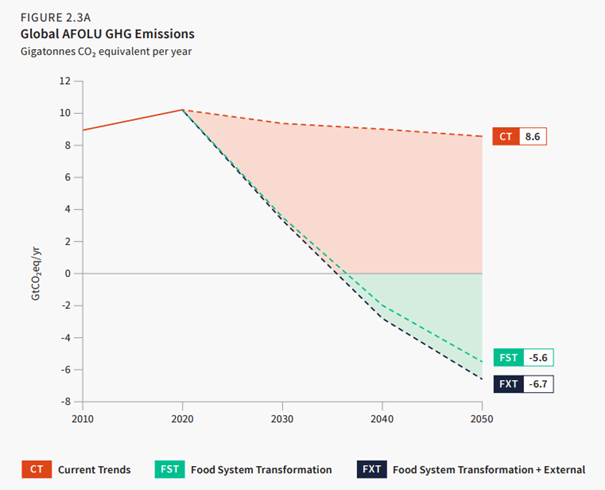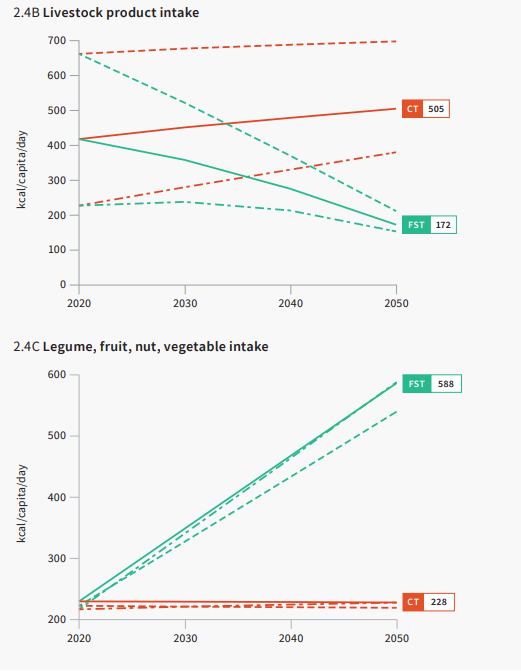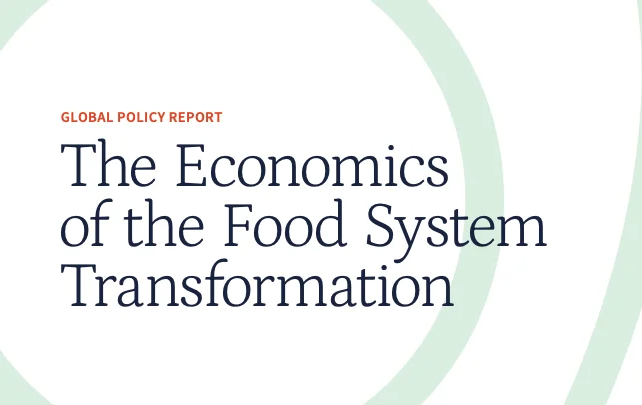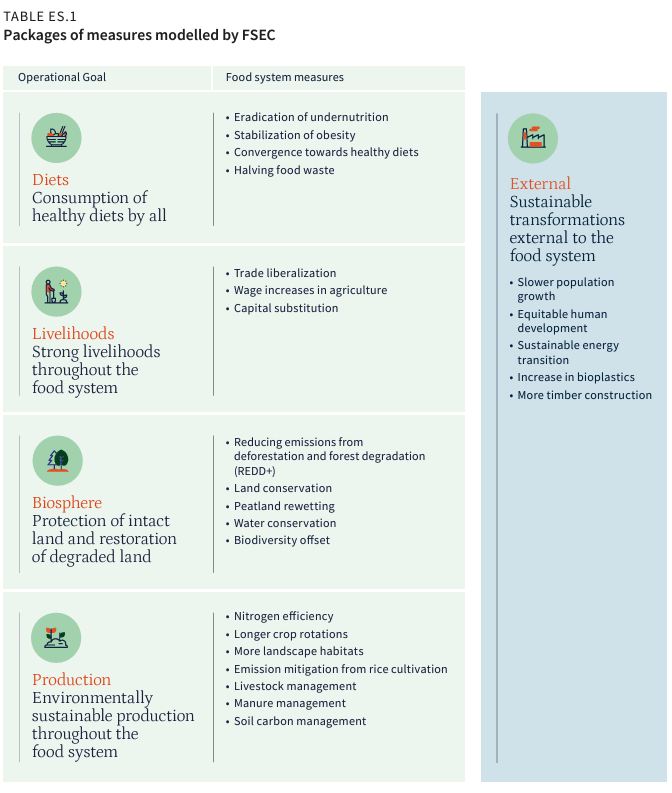Food Economics Commission Report CO2-neutral Food Systems
The report of the Food Economic Commission titled “The Economics of the Food System Transformation”, published on January 29th 2024, urges for a transformation of global food systems due to their significant negative impacts on humanity and the environment. This report echoes the mission and goal of the TAPP Coalition in detail. We therefore endorse this report, and would like to share the results in this news item. The report proposes taxes on carbon and nitrogen pollution in food systems, with the revenue directed towards poorer households, to enable them to buy healthy and sustainable food products when food prices will go up.
The Food Economics commission was founded by prof. Rockstrom (Postdam Climate Institute Berlin) and Gunhild Stordalen (EAT, and UN Food Systems Summit). Gunhild Stordalen and Jeroom Remmers (TAPP) both were panelist during events at the last two UN Climate Summits.
Results of the Report.
Despite the current challenges, it argues that transforming food systems is both possible and economically beneficial. The report suggests that such a transformation could generate economic benefits ranging 5 to 10 trillion USD annually, which is equivalent to 4-8% of global GDP in 2020. Additionally, it highlights the potential for addressing climate, nature and health emergencies through this transformation. It means, at global level, consumption of vegetables and fruit has to rise and consumption of meat and dairy should go down. This can lead to zero GHG emissions in the global food system in 2040 and a steep decrease in the number of people with obesity.


However, achieving this change requires overcoming various obstacles, including power imbalances among stakeholders and differing views on what constitutes a sustainable food system. The report emphasized the importance equity and inclusion in the transformation process to ensure its political viability and success. It summarizes finding from a four-year investigation by the Food System Economics Commission, which utilized economic modelling, literature reviews and case studies to assess options for comprehensive food system transformation.
Our Problematic Food System
Current food systems exhibit significant costs that outweigh their contributions to global prosperity. Health costs, estimated at 11 trillion USD annually, are driven by non-communicable diseases linked to food. These systems also perpetuate structural poverty, particularly in agriculture. Despite policy commitments, the global food system remains on an unsustainable trajectory, with projected impacts including continued food insecurity, undernutrition, and a rise in obesity.
The trajectory of the global food systems is unsustainable, and existing policy commitments are insufficient to change course. Even if nations fulfil all their commitments outlined in their commitments outlined in their Nationally Determined Contributions (NDCs), the food system will still contribute significantly to future emissions, leading to a projected global temperature increase of 2.7°C by the end of the century compared to pre-industrial levels.
Beyond climate impacts, continuing trends will result in:
- Persistent food insecurity and undernutrition: By 2050, an estimated 640 million people, including 121 million children, are projected to be underweight.
- Global adoption of unhealthy diets and its medical costs: The global adoption of diets high in fats, sugar, salt and ultra-processed foods would increase the number of people worldwide by 70%. This number is accompanied by escalating medical costs which can rise from 600 billion to USD today to almost 4 million by 2030.
- Increase of food waste: Food waste increases by 16 percent compared to today.
- Vulnerability of food production due to climate change: Food production in many countries will also become increasingly vulnerable to climate change and environmental degradation. This can lead to extreme events, rising food prices, poverty and, and social tensions.
- Increase in deforestation: Deforestation will erode 71 million hectares of natural forests between 2020 and 2050. To put in perspective, this area is equivalent to 1.3 times the size of France.
- Escalating nitrogen surplus: An escalating nitrogen surplus from agriculture and natural lands is expected. Which leads to polluted water which destroys biodiversity and undermines the public health.
- Transforming the system
The Food System Transformation (FST) pathway outlined by the FSEC promises substantial economic benefits of at least 5 trillion dollars annually. FST aims to eliminate undernutrition by 2050. It ensures adequate incomes for around 400 million farmers through productivity growth and targeted support policies. Moreover, it protects 1.4 billion hectares of land, afforesting 200 million hectares for sustainable uses like timber production. By promoting environmentally sustainable agriculture, FST reverses biodiversity loss, reduces water demand, and cuts nitrogen surplus. By 2040, the food system could become a net carbon sink, aiding in limiting global warming to below the 1.5°C target. Structural transformation accelerates, reallocating 75 million farm jobs to other sectors. Different regions experience varied dietary shifts and land conservation gains, with notable reductions in food waste in select countries.
The estimated cost of transforming the global food system is 200-500 billion USD annually. This includes investments in rural infrastructure, forest protection, reducing food loss and waste, dietary shifts, and agricultural research. Additional costs cover safety net support to ensure food affordability. While agricultural commodity prices may rise by 30 percent by 2050 under the transformation, offsetting measures like rising incomes and changing consumption patterns are expected.
The five key priorities for national food system transformation strategies are:
- Shifting consumption patterns: Encouraging healthier diets through policies.
- Repurposing government support for agriculture: Repurposing agricultural subsidies to support choices aligned with transformation goals.
- Targeting revenue from new taxes: Taxing carbon and nitrogen pollution, with the revenue direct towards benefiting poorer households.
- Innovating for productivity and livelihoods: Investing in research and innovation to develop technologies that benefit poorer producers. Improve sustainability and enhance labour productivity.
- Scaling up Safety Nets: Strengthening safety nets to ensure food affordability for the poorest.
The transformation of food systems brings significant benefits but also creates tensions among potential winners and losers, which must be managed to facilitate change. These tensions include fears of food price rises, job losses, policy siloes, global inequalities, and entrenched vested interests. To address these challenges, effective safety nets, job creation strategies, participatory governance, global cooperation, and countering corporate influence are essential. Despite the daunting challenges, there is hope as various stakeholders innovate and prioritize sustainability. The COP28 UAE declaration reflects a growing ambition to capitalize on the opportunities presented by food system transformation. By addressing policymakers’ concerns directly, significant benefits for both people and the planet can be achieved.




